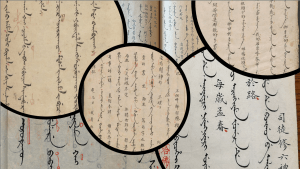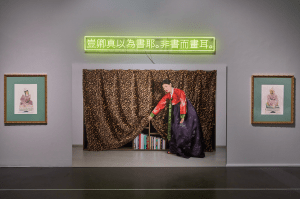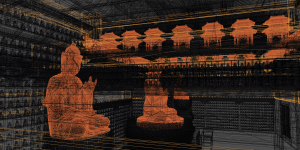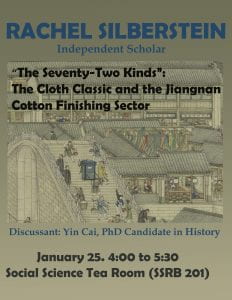We cordially invite you to join us next *Monday*, May 6, at 4:45-6:45pm CT for a special virtual-only session. Please register for zoom access here. This workshop features:
Feng Schöneweiß
Postdoctoral Fellow, Kunsthistorisches Institut in Florenz—Max-Planck-Institut
Who will be presenting the paper titled:
“Provenance, Memory, and Transcultural Monumentality: Chinese Monumental Vase as ‘national wertvolles Kulturgut’ in German Cultural History, 1717–2019”
*Please note the special day and format of this event.* The abstract and bio for this workshop can be found below.
~We hope to see many of you there~

Image: Walter Möbius (1900–1959), photograph of the banquet hall, 1933. Three-century jubilee exhibition “August der Starke und seine Zeit” [Augustus the Strong and his time] at the Dresden Residence Schloss, 13 April to 17 September 1933. Deutsche Fotothek, df_hauptkatalog_0051726. © SLUB / Deutsche Fotothek / Möbius, Walter
Abstract
The concept of cultural heritage in modern nation states is often associated with the connotation of the national. From the perspectives of global art history and transcultural studies, how to understand the accumulation of national significance in the formation of transcultural heritage? This paper addresses the merging conceptual dichotomy by a case study of transcultural monumentality. It examines how one of the so-called Dragoon Vases (Dragonervasen), large blue-and-white porcelain jars with lids made in Jingdezhen in circa 1690, became a cultural property of national significance (national wertvolles Kulturgut), the highest level of cultural heritage defined by Cultural Property Protection Act (Kulturgutschutzgesetz) in Germany. Based on a survey and typology of Chinese monumental vases (chinesische Monumentalvasen), a period term invented by museum professionals at the Dresden Porcelain Collection around 1900, the paper investigates the identity-forming impact of both the vases and their provenance on the eighteenth-century Porcelain-Regiment of Prussia, the baroque locality of Dresden in the eyes of travelers, generations of nineteenth- and twentieth-century German museum professionals, and the institutional identity of the collection. Substantiated with archives, inventories, architectural and exhibition designs, photography, and manuscripts in Dresden, the paper argues that the provenance of the Chinese vases, rather than their extraordinary materiality, embedded the global objects in the local cultural memory that contextualized the transculturation of heritage.
Bio
Feng Schöneweiß is an art historian of ecocritical and transcultural perspectives. He is currently a postdoctoral fellow at the 4A_Lab, Kunsthistorisches Institut in Florenz–Max-Planck-Institut (KHI) in cooperation with the Prussian Cultural Heritage Foundation. At the KHI, his postdoc project examines the mutual making of porcelain and Jingdezhen eco-systems through the analytical lens of energy consumption. Feng earned his doctorate in East Asian art history and transcultural studies at the University of Heidelberg. He was among the cohort at the inaugural University of Chicago/Getty Dissertation Workshop on Chinese Art History in 2018. His dissertation explores how German museum professionals fostered the cultural memory of transcultural objects while initiating a new field of art-historical inquiry. The current paper is a chapter of his first book manuscript, titled “Provenance and Monumentality: Chinese Porcelain, German Curators, and Global Art History in Dresden from 1700 to 2020.”
Feng has received grants and fellowships from American Ceramic Circle, Bei Shan Tang Foundation, DAAD, German Research Foundation (DFG) Excellence Initiative, Historians of Eighteenth-Century Art and Architecture, Max Planck Society, and University of Heidelberg. He has published in Chinese, English, and German, and made curatorial contribution to major exhibitions at Berlin State Museums, Dresden State Art Collections, Museum of Applied Art in Frankfurt am Main, and Shanghai University Museum.




 Image: Shimada Yoshiko, Becoming a Statue of a Japanese ‘Comfort Woman’ & The Tomorrow Girls Troop, Against Forgetting. Photograph by Qianwen Jiang.
Image: Shimada Yoshiko, Becoming a Statue of a Japanese ‘Comfort Woman’ & The Tomorrow Girls Troop, Against Forgetting. Photograph by Qianwen Jiang.


